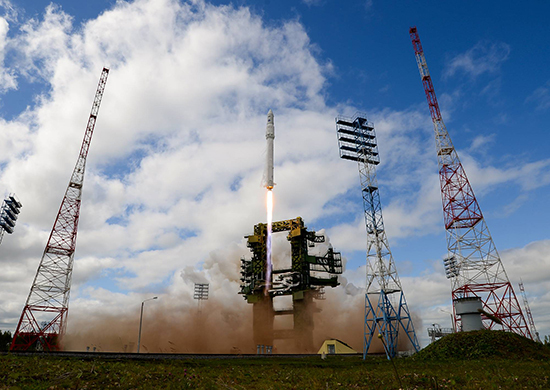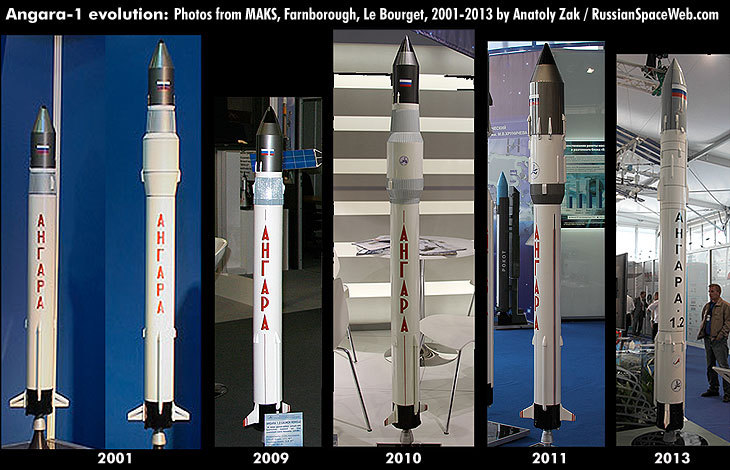What is wrong with Angara-1.2PP

On July 9, 2014, I’m not afraid of this word, a significant event in the Russian cosmonautics, after 20 years of development, the flight tests of the Angara launch vehicle finally began. But not all of this event was perceived as unequivocally positive, “experts” immediately put forward numerous theories that the launch was unsuccessful, and if it was successful, then only the first step flew, and this “does not count” - since the first step rocket "Angara" has already made three flights in the Korean KSLV. In general, again, the taxpayers "dust from the eyes allowed."
What are the guesses that “something went wrong” tm ? Basically, there are three reasons:
')
- First, she somehow smoked suspiciously in flight;
- The second one, the rocket went from the start to the right and almost fell;
- And finally, the third and most important flight was suborbital.
Putting all three reasons together, especially considering that all of them are true, we get an ugly picture of failed tests. And if the first two points are explained quite simply (evaporation of air from a tank of liquid oxygen and a maneuver away from the starting table), then on the last point I would like to dwell in more detail.
In the beginning was the letter, even two
In fact, everything is explained both simply and difficultly at the same time, the whole thing is in these two letters of the PP, which are decoded as
- Angara-1.1 carrying capacity of 1.5t
- Angara-1.2 - 3.8t
- Angara-3 - 13t;
- Angara-5 - 25t.
- Angara-7 (hypothetical) - 35t.
As we see, there are no PPs in the Angara lineup, so why was it invented, and why it was impossible to use Angara-1.1 or Angara-1.2? For a start, you need to understand what is the difference between 1.1 and 1.2. As we know, all Angara family rockets are assembled from universal blocks URM-1 (for the first stages) and URM-2 (for the second and third), and so the Angara-1.1 URM-2 does not exist at all. The role of the second stage on it is carried out by the Briz-KM upper stage. And since we know that the URM-1 successfully flew all three times as part of the Korean KSLV , and the Breeze-KM is used in conjunction with the Rokot launch vehicle, it is understandable that it does not make sense to carry out such tests. The design of the URM-1 is shown below (here and further illustrations from the site of Anatoly Zak )

But, as you probably already guessed, URM-2 is in the composition of Angara-1.2, why did not you use it?
Not universal versatility
During the development of URM-2, it turned out that the second stage is too heavy for a light Angara and too light for a heavy one. Therefore, stepping on the throat of versatility, it was decided for the light Hangar to make its own modification of the URM-2 with a reduced diameter from 3.6 to 2.9 meters. The evolution of design ideas can be clearly seen in photographs of models from exhibitions of different years.

In the 2013 photo it can be seen that the diameter of the first and second stages are equal, exactly this will be Angara-1.2. But at the same time on the Angara-5 will still be used URM-2 diameter of 3.6 meters. The design of URM-2 can be carefully studied using the following three-dimensional model.

It was for testing the URM-2 that a special rocket was prepared, which was called the Angara-1.2PP, consisting of the first stage Angara-1.2 (URM-1) and the third stage Angara-5 (URM-2). Most of all, this rocket is like a modification of the Angara-1.2 of 2010.
Where is the upper stage, Zin?
On this difference, the PP from the standard Angara does not end. As the upper steps in Angara-1.1 and 1.2, the Briz-KM upper stage is used (without it, it is impossible to bring anything into orbit, the upper stage works including for finishing the reference orbit), but it does not have PP. This is primarily due to the fact that in the test launch of the Angara it was decided not to take out the payload, but to replace it with an overall mass model. This decision is probably due to the fact that the Center. Khrunichev doesn’t work with such self-confident people as Elon Musk, who used real satellites in the first three launches of the Falcon-1 (by the way, all these launches were unsuccessful).
Purely theoretically, it was possible with the help of Brize to bring the mock into orbit, and then with the help of it to reduce it, but a paradox arises: completed successfully, and if not, then there is nothing to work. So, there is no overclocking unit, the over-weighted second stage ... there is only one option left - a suborbital flight, you just need to choose a place.
I think there is no need to explain why a landfill in Kamchatka was chosen for the crash site, and not the Pacific Ocean or the territory of a “probable enemy” (in the first case the press would eat, in the second it was a possible enemy). By the way, due to the lack of an upper stage, the overall mass model was not separated from the second stage, since the separation means is either in the upper stage or in the payload, and neither was the first launch. Fully device Angara 1.2PP below.

Despite the persistent voices of critics of the Angar project, the URM-1 and URM-2 tests were successful, and now everything is ready for the launch of the heavy Angara-5 at the end of this year. It remains only to wish that these tests were equally successful.
For post used information with:
Anatoly Zack site ;
Site CiH ;
Forum "Cosmonautics News" .
Source: https://habr.com/ru/post/230083/
All Articles